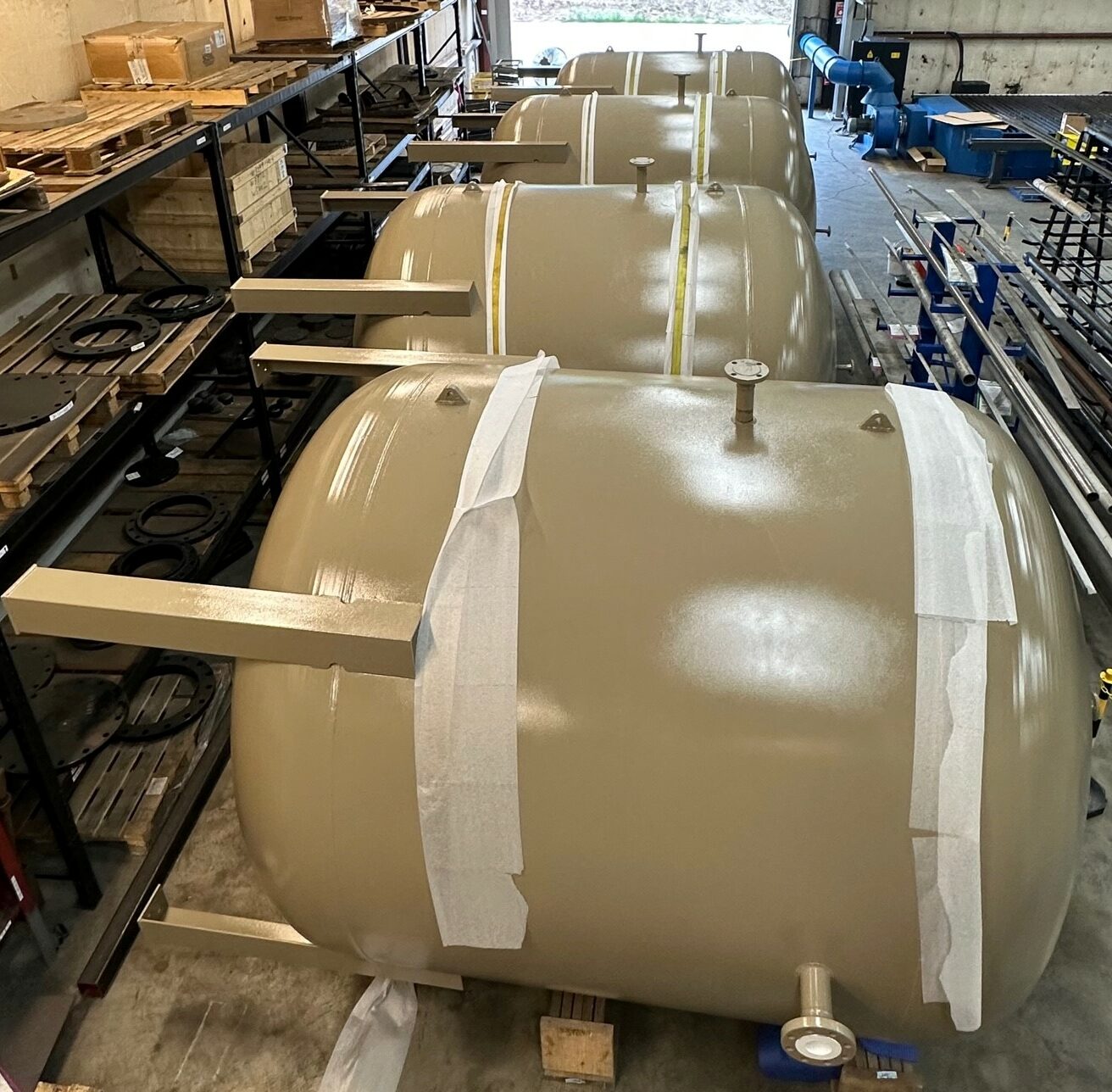Rexarc is currently open from 7:30 AM – 4:00 PM EST, Monday – Friday. Read More
Rexarc is currently open from 7:30 AM – 4:00 PM EST, Monday – Friday. Read More

Pressure vessels play a large role in many water treatment methods. Water treatment is used to remove contaminants from water used for drinking, washing, and cooking, among others, so it’s a critical industry that everyone uses at some point. This article will explain some basics about water treatment and provide some examples for how pressure vessels are used to make your drinking water cleaner.
Water treatment refers to a range of processes that are used to remove unwanted contaminants from water. Contaminants can include things like:
Drinking water needs to have trace amounts of some metals and other materials dissolved in it for it to be safe and healthy for people to drink. The amount of material in the water for it to be safe for drinking depends on the material, and anything in excess of that amount counts as contamination and should be removed.
Water can encounter many sources of contamination during its cycle, including collecting pollutants from the air when it rains, mixing with pollutants on roads, dumping unwanted materials into waterways, and while being used for industrial processes.
Some regions have limited quantities of water, so any water collected has to be used to fulfill the needs of a community. Depending on the water’s source, treating the water may be something as simple as a layer of filters or require multiple stages of targeted pollutant removal and processing to be used as part of a general water supply.
Getting the necessary supplies, equipment, facilities, and workers to treat water becomes increasingly crucial in communities where water is limited, but it’s important in most places. Water can spread pollutants across large areas, and it can be very difficult, disruptive, and expensive to remove them once they’ve entered the water supply.
Pressure vessels are used in many kinds of water treatment processes, including some of the following:
To remove contamination from water, granular activated carbon pulls contaminants from the water and traps them in its porous structure. Activated carbon has an extremely porous surface, which gives it a high surface area, and when in a granular form can be readily mixed with water.
Many contamination removal systems that use granular activated carbon place the carbon in a pressure vessel and add water to the system. Once the water passes through the carbon bed in the pressure vessel, it is removed from the system for further purification if necessary.
Bubble aeration is used to remove contaminants from water that dissolve easily into air. It works by adding air bubbles to water in a contained environment. The more air bubbles in the water, the greater the surface area between the water and the air, and the more contaminants can move from the water into the air.
Bubble aerators use compressed air to create the air bubbles in the water. Compressed air relies on pressure vessels to be stored and transported. In addition, some bubble aeration systems also need to capture the air that removed the contaminants from the water to prevent air pollution from occurring. These systems will use bubble aerators placed inside pressure vessels to collect the air and transport it elsewhere to be purified before being released into the atmosphere.
Bioreactors rely on bacteria to consume contaminants in water. When the bacteria consume the contaminants, they can release by-products that are not harmful or easier to remove from the water with other technologies.
Bacteria used to remove impurities often release gases that need to be contained and released in a controlled fashion or they will build up inside the container holding the water and the bacteria until it fails. Pressure vessels can be used to manage the buildup of gaseous byproducts and route them appropriately.
Reverse osmosis systems for water filtration use membranes that water molecules can pass through, but larger molecules can’t. Most contamination in water is made of molecules that are larger than water molecules, so it can be an effective way to remove many types of contamination.
These types of systems pressurize water to help it pass through the membranes more efficiently. The higher pressures require the use of pressure vessels to contain the water while it is passing through the membrane.
Rexarc is an expert manufacturer and designer of custom pressure vessels in carbon and stainless steel. If you have questions about pressure vessels and how they can be used in water treatment, we’d be happy to chat with you!

We are a one stop shop from custom vessel production to full skidding, plumbing and instrumentation.

We stand by our processes and communicate with you on your project status as much or as little as you would like.

We continually reinvest in our people, business, and equipment technology to ship quality products on time.
